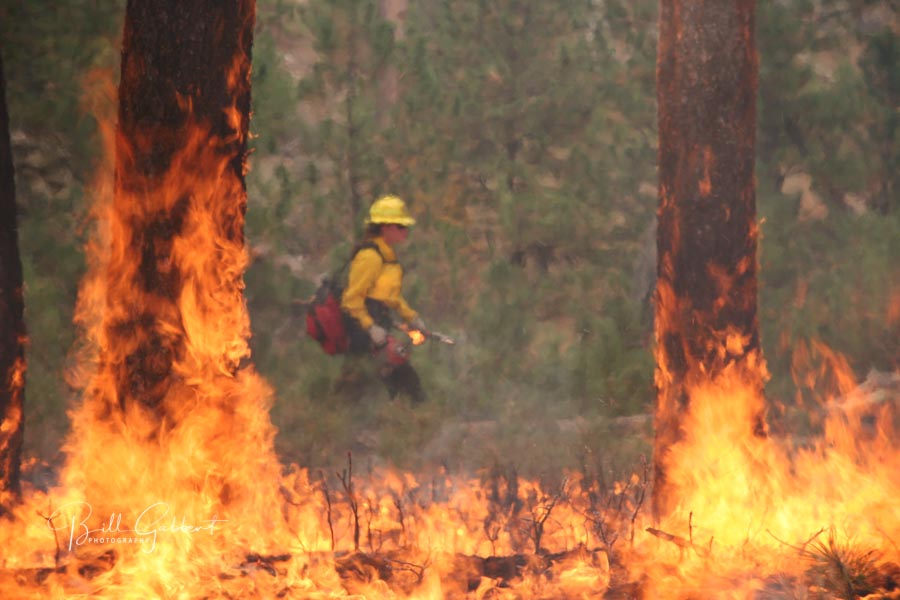
With only six days remaining in his presidency, Donald Trump signed an Executive Order (EO) January 14 establishing an Interagency Wildland Fire Subcabinet.
One of the reasons given for creating the organization was “federal wildland fire management lacks a single focal point of responsibility for policy leadership and accountability for cost controls,” and, “agencies do not adequately or effectively coordinate with each other at the policy level to reduce hazardous fuels and wildfire severity.”
Co-chaired by the Secretaries of Agriculture and the Interior, the other members will be Secretary of Energy, the Secretary of Homeland Security, the Chairman of the Council on Environmental Quality, the Director of the Office of Science and Technology Policy, the Administrator of the Environmental Protection Agency, and the Director of the National Economic Council.
The EO requires that the group submit a strategic plan within 180 days addressing a lengthy list of issues, emphasizing cross-boundary and interagency coordination and planning, including:
- Effectively managing preparedness resources, initial attack response, extended attack and large-fire support.
- Developing and adopting additional hazardous fuels performance measures that go beyond the traditional output reporting of total acreage for fuel removal.
- Develop fire suppression performance measures that demonstrate strategic use of high-cost human capital, equipment, and aircraft as opposed to traditional reliance on overwhelming force.
- Developing and adopting new technologies to improve the safety, efficiency, and effectiveness of suppression operations.
- Developing and adopting data-driven decision-making, allowing for better integration of wildland fire research and development into ground-level suppression operations and hazardous fuel mitigation.
- Evaluating personnel policies to ensure that they allow for the year-round availability of a well-trained firefighting force at all levels.
- Evaluate policies that deal with the fire safety of powerlines.
- Examine how compliance with the National Environmental Policy Act may negatively affect hazardous fuel reduction projects.
- Reduce unnecessary duplication by coordinating and consolidating existing wildland fire related councils, working groups, and other formal cross-agency initiatives, as appropriate.
“While I am proud of our progress to promote active management, reduce hazardous fuels, work across boundaries and increase the resiliency of our nation’s forests and grasslands, I believe more can be done,” said Secretary of Agriculture Sonny Perdue. “With the establishment of a subcabinet dedicated exclusively to wildland fire management, we will be better equipped to prevent and fight wildfires, ensuring these national treasures will continue to be enjoyed by future generations of Americans.”
“Firefighter and civilian lives lost, as well as economic, social, and ecological impacts demonstrate a need to change,” said Tom Harbour, former National Director of Fire and Aviation Management for the U.S. Forest Service. “While I am confident the incoming Administration will display a thoughtful perspective on wildland fire, many of the actions described in the new Executive Order, even at this late date, have merit. Important questions remain, for example, how will the States engage in developing comprehensive solutions? President Trump has now given those of us engaged in wildland fire his ideas on how to improve. I am confident President Biden and his team will consider the new Executive Order, adjust as needed, and offer additional ideas about improving the wildland fire management system.”
Many of these goals appear to be laudable. It is interesting that they may be looking to downplay the importance of attacking new fires with overwhelming force.
There appears to be substantial overlap between this new subcabinet and the Wildland Fire Leadership Council which was established in April 2002. It was convened by the Secretaries of the Interior, Agriculture, Defense, and Homeland Security and is “dedicated to consistent implementation of wildland fire policies, goals, and management activities.”
Thanks and a tip of the hat go out to Robert, L., & Al.
